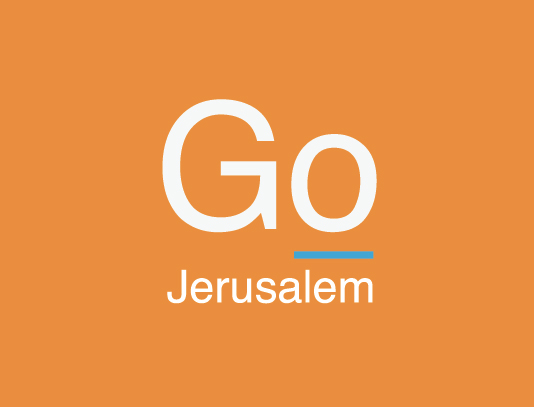Uncovering the old soul of changing Nachlaot

It's hard to imagine the young boy in a sailor-style suit, sitting for a family photograph on the Tel Aviv beach in 1926, as Israel's 5th president, but there is the young Yitzhak Navon, with his brother, sister, parents and grandmother, getting some sea air on a family vacation.
In a more formal shot from 1925 of the president-to-be and his family, Navon's father wears a fez, and the entire family their finery as residents of Jerusalem's Ohel Moshe neighborhood.
Ohel Moshe was founded in 1882 by a community of Jews who had come to Israel from Arab lands, the neighborhood being one od the first Jewish ones established outside the Old City walls with the financial aid of Sir Moshe Montefiore. Today, Ohel Moshe is ensconced within greater Nachlaot, now considered its own Jerusalem neighborhood, but historically a warren of distinct enclaves. The bustle of Ohel Moshe served as the nucleus of two important Jerusalem institutions: the Etz Chaim yeshiva and the Machane Yehuda market, which started as a series of stalls attached to the yeshiva's walls to free Ohel Moshe residents of the burden of having to schlep groceries from the Old City.
Ohel Moshe's stories come to life in Photograph in Stone (it more or less rhymes in Hebrew), an exhibit of photos along the building walls, devised by Dvora Avi-Dan of the Lev Ha'ir community center. Avi-Dan says she modeled the photos' presentation after stone "frames" around dedication stones in Jerusalem synagogues. Some of the offerings looking like pages of Talmud, with a photo in the center and information running around the image, while others are simply enlarged family photographs.
Along with captions provided by relatives or friends, the photo-plaques provide a much-needed historical perspective to this quiet neighborhood in the midst of a demographic and economic sea change, and provide a rare look into the private lives of the modest pioneers who laid the foundations of contemporary western Jerusalem. Photos of former dandies or plain working folk stare down from the walls as if they still live here, and even as the ramshackle structures of old Nachlaot are replaced by gleaming Jerusalem stone luxury duplexes, their ghostly gazes are hard to shake.
"There we felt like one big family," writes Mazal Navon, Yitzhak's sister, of the neighborhood, calling it "a Garden of Eden for children" full of "all kinds of people and all kinds of stories." These stories eventually inspired Yitzhak Navon's book Bustan Sephardi ("bustan" is Hebrew for a garden containing many varieties of trees), a hugely popular presentation about his old neighborhood, featuring both nostalgic stories and riffs on the liturgy he heard regularly in Ohel Moshe.
Using a guide-map provided by the nearby Weiner Center, which is in courtyard of the adjoining Mazkeret Moshe enclave, one can meet an assortment of important or simply charming inpiduals, like Yitzhak Levy (Ohel Moshe Street), who traveled the entire country collecting Sephardi liturgical poems and melodies so that they would not be lost.
The photo of "Cohen the Milk Man"'s family (on HaGilboa Street) - directly opposite a newly renovated duplex reflecting the gentrification of the neighborhood - reveals the way the place used to really look: uneven stones, with old water cisterns since blocked up. There's also a depiction of the 1914 elections for the neighborhood council, showing no sexism here, with 5 out of the 30 candidates being women.
Families and photographers went all-out to produce photographs that often ended up decorating living room walls, a sense of importance that comes across in the pictures. "When you went to the photographer then, you got dressed up nicely," says Avi-Dan. "The pictures show the hand-made clothes, the shoes and the hairdos" worn by the women of the period.
Suppliers of the photos, which Avi-Dan began collecting in 2002, included those who'd forgotten all about them. Avi-Dan's detective work and charm got the families' relatives to turn over the pictures or write a caption. "They're like neighborhood residents," she says of the photo collection, with 20 larger works scattered in a small radius of Ohel Moshe - where windows in the shape of Torah scrolls, or ventilation openings in the form of Stars of David can still be seen - and 16 smaller ones at the Lev Ha'ir community center.
"It brings back the people of that time, tells their story," says Avi-Dan. "And there's something special about it - they become part of the scenery, of the people who live here.... There's also something personal about it, because history is usually about the leaders and kings, and here you see the beauty that was in the average person who lived here."
Images courtesy of Ofer Kotler for Lev Ha'ir.
2000+ tips and recommendations
Jerusalem, the city where kings ruled and sultans sat is no stranger to luxury. Today, even the visiting yeoman can find...
Jewish tradition holds that in the times of the First and Second Temples, all the Jewish people would gather in Jerusalem...
Technically, it's possible to visit Jerusalem without going to the Old City, but it would be hard to say you'd...
Looking for a place to begin your morning in luxury and style? Look no further than the American Colony Hotel, which offers...
The faithful may rhapsodize about the spiritual highs to be reached in the Old City; culture cognoscenti groove on the...
Once upon a time, options for eating out in Jerusalem were limited to local common phenomena such as falafel and schwarma,...
No results to show





|
Text text text
|
||